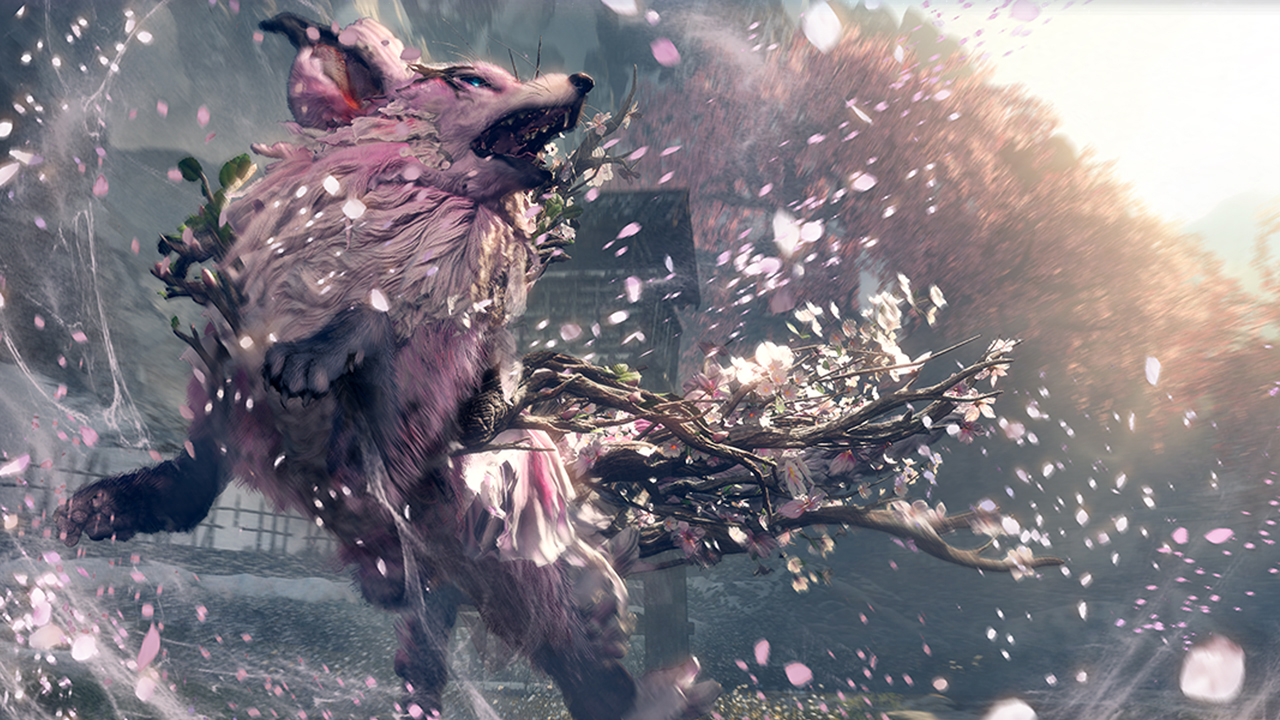TechRadar Verdict
Wild Hearts S gives Switch 2 owners the chance to play Dynasty Warriors developer Omega Force’s monster-hunting game. It’s far from a perfect port, with a noticeable visual downgrade and choppy performance. But it’s still perfectly playable, and the game’s fantastic Karakuri system and interesting take on weapons and armor sets remain as refreshing today as they did in the original release.
Pros
- +
Creative weapon types
- +
Karakuri system is awesome
- +
Weapon and armor upgrades are interesting
- +
Has all updates and quality-of-life additions
- +
Quick load times
Cons
- -
Noticeably worse visually than the PS5 and Xbox versions
- -
Inconsistent performance on Switch 2
- -
The camera can really screw you over
- -
Monster variety is lacking in the early game
Why you can trust TechRadar
Platform reviewed: Nintendo Switch 2
Available on: Nintendo Switch 2 (originally released on PS5, Xbox Series X|S, and PC)
Release date: July 25, 2025
Wild Hearts S is the Nintendo Switch 2 port of the 2023 action game, developed by Dynasty Warriors team Omega Force, and this time published in-house at Koei Tecmo. No longer an EA Originals title, Wild Hearts S has been given a chance to shine on Nintendo’s new hardware. So how does it fare?
Well, performance and visuals are a mixed bag. Wild Hearts S targets 60 frames per second (fps), but unfortunately rarely meets that goal. Instead, frame rate can fluctuate wildly, especially in busy, visually dense areas. Graphics on Switch 2 are also noticeably worse than the original PS5 and Xbox Series X|S release, with greatly simplified textures and geometry. Thankfully, the kemono (Wild Hearts’ term for monsters) still look and animate fantastically, as does your player character.
Thankfully, it never reaches a point that I’d call outright unplayable. If you can get used to the performance and presentational downgrades, Wild Hearts S is a solid port of an underrated game that was never able to leave the long, wyvern-like shadow cast by Capcom’s Monster Hunter series.
Far from being an uninspired clone or quickly-made cash-in, Wild Hearts brings plenty of its own ideas to the monster-hunting subgenre. Its karakuri system is fantastic, as it lets players quickly place down contraptions that are useful for both combat and traversal. Its roster of weapons is interesting, too, with each category falling squarely in that satisfying ‘easy to learn, hard to master’ stable.
It’s a game that I strongly believe doesn’t get enough credit for the things it does right. But that’s not to say there aren’t some frustrating elements. Overall movement can feel a bit stiff, the camera can be your worst enemy, and even early game kemono punish new players hard by hitting like trucks.
But if you’re willing to overlook its shortcomings - and a relative lack of polish compared to Capcom’s flagship franchise - there’s plenty to love about Wild Hearts S.
Real face
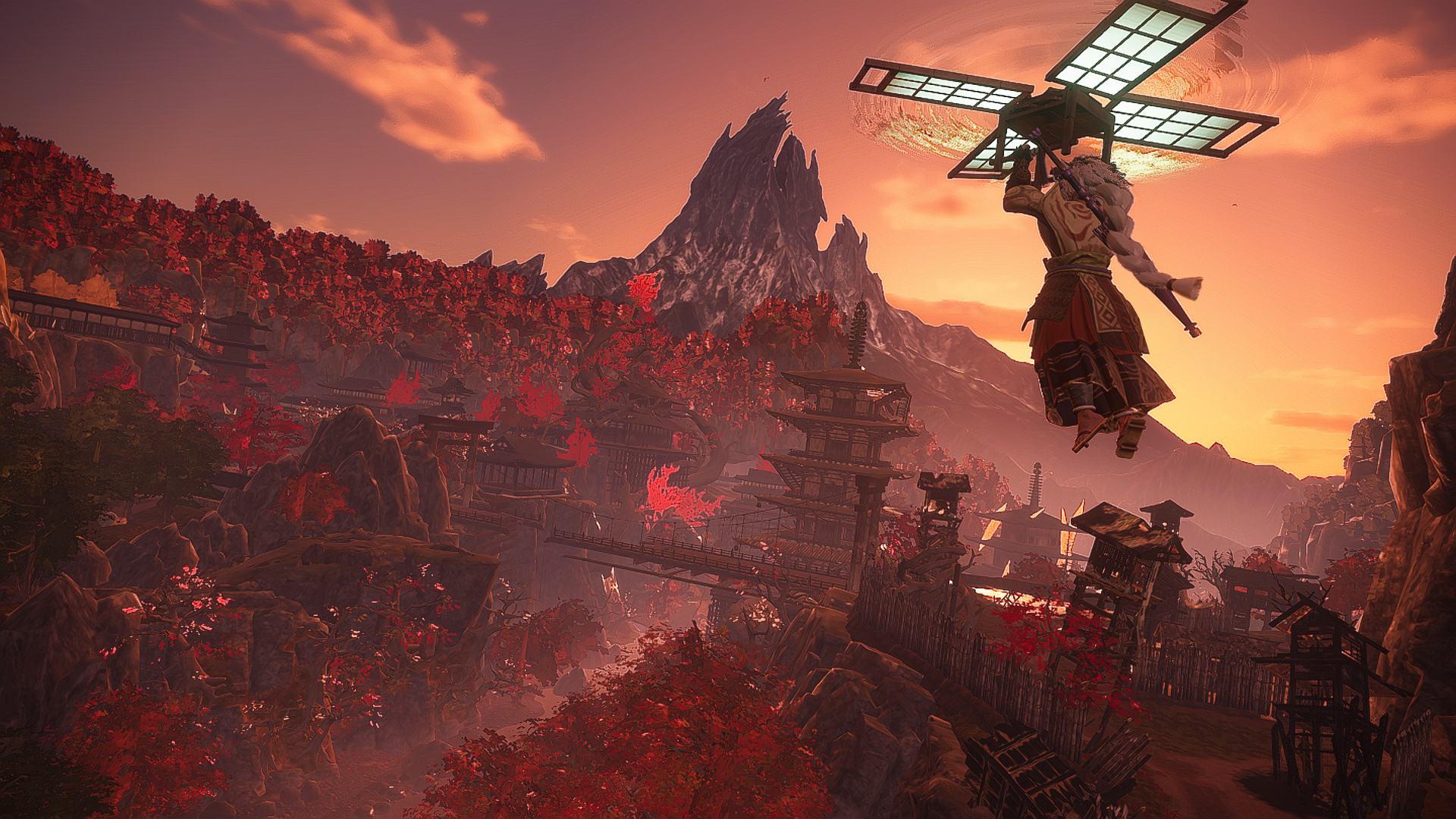
The main drive of Wild Hearts is that you’re a hunter from a distant land, trying to find a new purpose away from the chaos of the world. You’re drawn to a land ravaged by deadly beasts - known as kemono - and decide to help the town of Minato rebuild and fight back against the threat these creatures pose.
Sign up for breaking news, reviews, opinion, top tech deals, and more.
The story is as basic as it gets, but it’s certainly not offensively bad. It’s very much a vehicle to guide you from monster to monster, location to location. What is neat, though, is that the four main areas outside of Minato are massive, and each is inspired by a different season of the year.
After a brief tutorial, which introduces you to some basic combat against smaller monsters and the awesome karakuri system (more on that soon), you’ll have a chance to create your character. If you’ve done character creation in other Koei Tecmo games, like Nioh 2 or Wo Long: Fallen Dynasty, it’s very similar here with plenty of options to customize your appearance, hairstyle, and cosmetics. Definitely one of those where you can literally spend your first hour perfecting your look.
Threads of fate
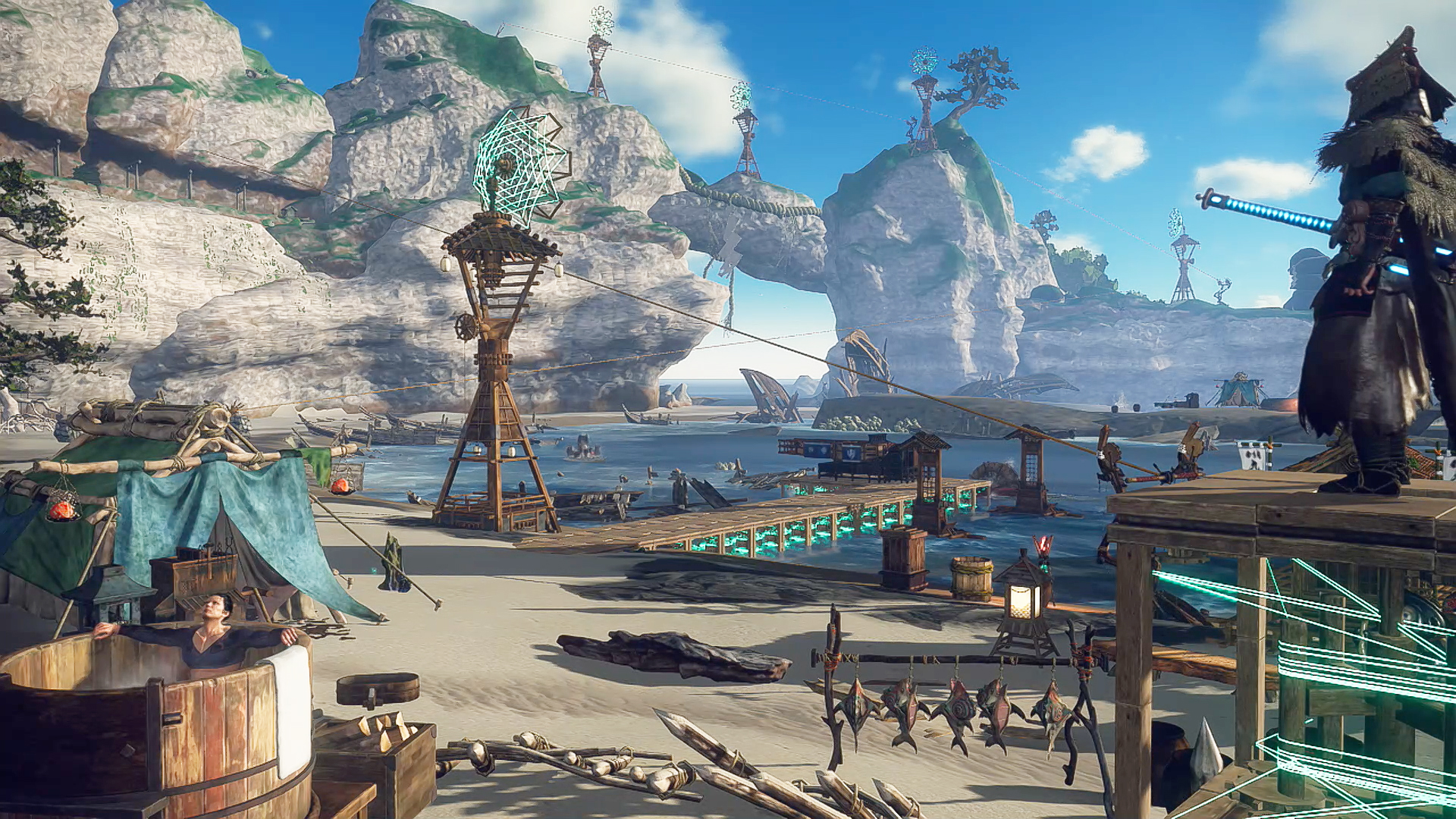
Your initial run of hunts in Wild Hearts will gradually introduce you to the karakuri system, which is easily my favorite part of the game. Karakuri are wooden, mechanical contraptions that you can spawn instantly from a quick-select menu, and there are tons of different types that aid you in both combat and traversal.
The most basic of these is a stackable box, which can either help you climb to high ledges or allow you to jump into the air for a plunging attack. Springs, meanwhile, can propel you over gaps or let you lunge at a monster for a surprise attack. These and more have multiple uses, providing a good amount of depth to the game.
That’s kind of a running theme with most karakuri devices - they’ll almost always have more than one use. The game doesn’t always spell out the uses to you outright, either, so there’s plenty of room for experimentation.
Furthermore, some karakuri can combine into larger, more powerful devices. Stacking six boxes creates a bulwark, for example, which can stop charging beasts dead in their tracks. Elsewhere, three torches stacked together create a firework that can ground flying beasts.
Naturally, these hybrid karakuri are more expensive to spawn (the system has its own ‘currency’ called thread, which you can gather from rocks, trees and so on), and outside of tutorial moments introducing you to their uses for the first time, it’s largely up to you to figure out when best to deploy them against specific monsters.
Maybe what I love most about karakuri is that you can place them literally anywhere on the open map. Struggling to locate a monster? Pop down a radar tower to scan the surroundings. Need to cross a large swath of land? The flying vine can zip you over there in a flash. What if you need an extra fast travel point? You can set up a base camp and various amenities anywhere you want. It’s an impressively fluid and dynamic system, and one that can help you shape any hunting ground in your favor.
Hunter monster
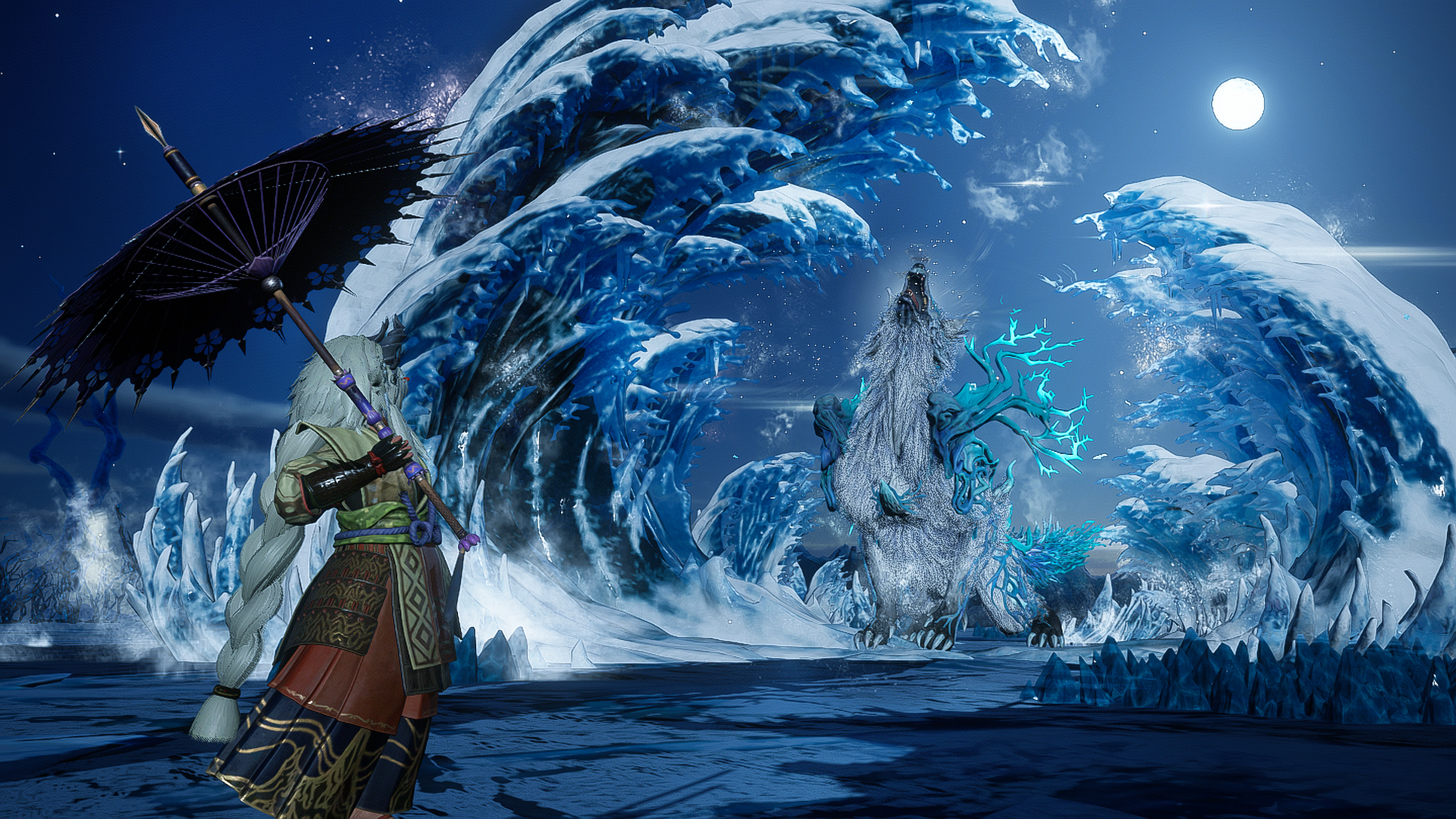
Wild Hearts’ core objective of hunting large monsters may sound part and parcel for the subgenre, but its pace is decidedly different from that of Capcom’s Monster Hunter series, especially. In Wild Hearts, there’s nothing in the way of item management, and food buffs can be applied at any time, just while you’re out in the field.
That may disappoint some looking for something a bit more slow-paced and preparatory. But Wild Hearts does make up for this in its fast-paced action, aggressive monsters, and its interesting take on build variety.
To start, Wild Hearts handles weapon categories pretty differently from what you might expect. The karakuri katana, for example, is perhaps the easiest to understand. It builds meter as you attack, and when full, it can transform into a whip-like weapon with a powerful, modified move set.
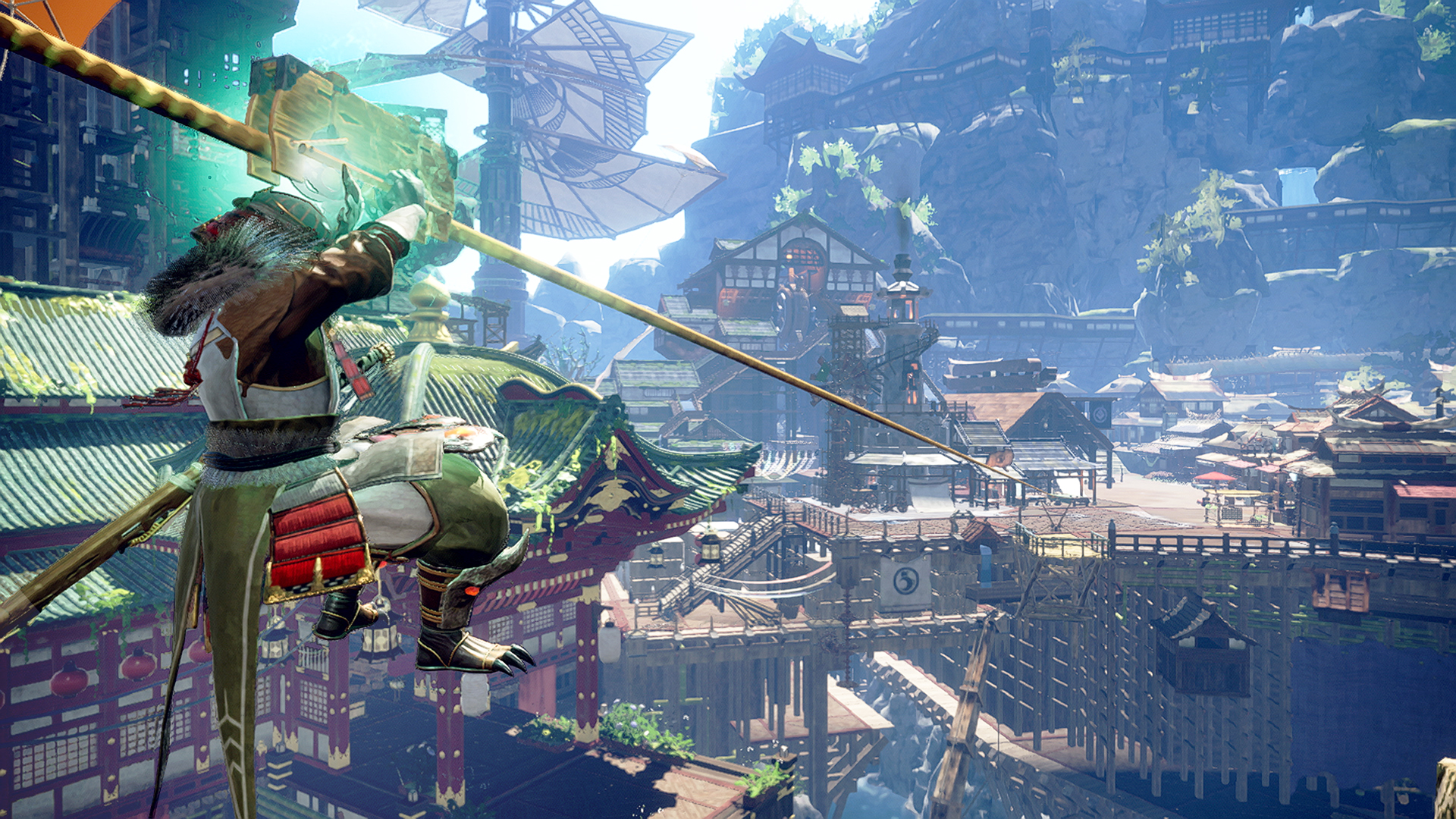
Wild Hearts S’s karakuri system is a creative and innovative addition to the monster hunting subgenre, greatly expanding traversal and combat possibilities. Examples include planting a spring to launch yourself at a monster for a surprise attack or placing a zipline to cross massive distances quickly. It’s awesome, and I hope we get to see the system expand in a potential sequel someday.
The karakuri staff is a bit more interesting. It morphs between four forms - each with its own move set - with a carefully timed press of ‘ZR’, and these morph attacks build meter when connecting with a monster. At full gauge, you can morph the weapon into a comically large buster sword, unleashing diabolical amounts of damage. It’s a very risky weapon, though; the sword combo is slow and locks you in place, while knowing the best time to morph the weapon is a learning experience in and of itself.
The bladed wagasa is similarly risky, rewarding successfully-timed parries with massive damage. However, my favorite has to be the claw blade, which has a hook you can embed into a creature before swinging around and towards it like a deranged, combat-ready George of the Jungle.
The way you go about upgrading weapons and armor is really interesting, too. Each weapon type has a universal skill tree, which branches off into weapons you can create from various monster parts. While you can beeline from the start of the tree to your desired weapon, it actually can pay dividends to plan out a route on the skill tree that provides unlockable traits which you can carry over to the final build. You don’t need to worry about wasting materials if you mess up or change your mind, either, as you can reset the tree at any time for a small gold fee, refunding all materials used.
Armor is a similar story, most featuring unique skills like increased health or dodging distance while out on a hunt. The key thing here, though, is a gauge that tilts in either a ‘human’ or ‘kemono’ direction depending on which pieces you have equipped. This is important as certain skills will only become active if you’re in the right spot on this gauge, either on the human or kemono side. You can also make human or kemono-inspired versions of armor sets after crafting the base piece, to further influence the gauge.
It’s a really interesting approach that reminded me of how Monster Hunter players craft hybrid sets that target specific skill activations. In Wild Hearts’ case, you may have to sacrifice some defence or elemental resistances in order to get the skills you want, again bringing an element of risk-versus-reward to gameplay. It’s cool.
What's the 'S' for?
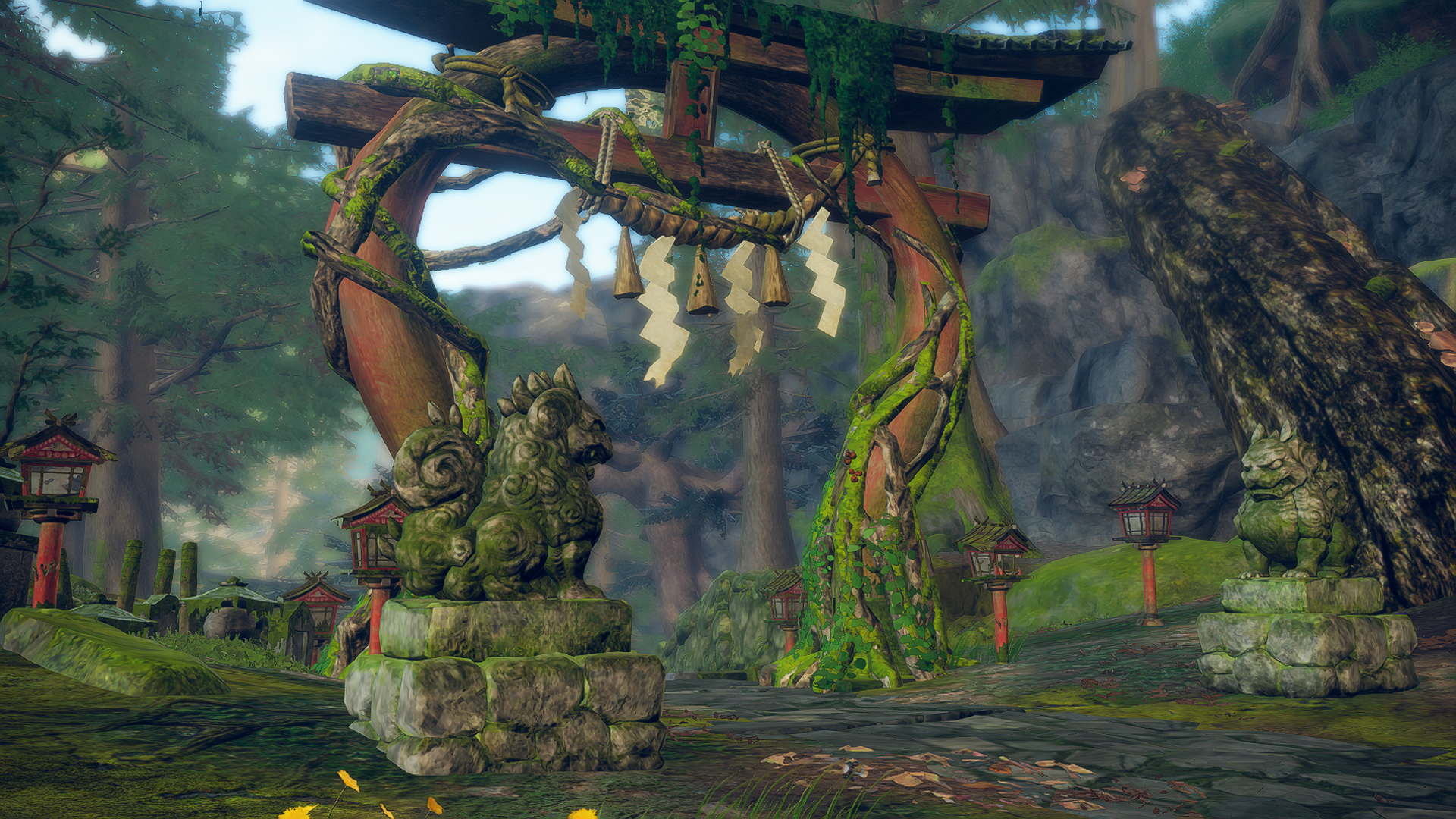
So what are the big differences in the Nintendo Switch 2 version of Wild Hearts? Well, the game now supports multiplayer for up to four players, an increase from the original release’s three. It’s unfortunately not crossplay, though, which makes Wild Hearts S an independent experience that’ll live or die on the Switch 2’s player base. Another slight downer is that the game doesn’t support voice chat, so you’ll need to rely on GameChat or an app like Discord when playing with friends.
Wild Hearts S does pack in all of the original’s post-launch support from the get-go at least. That includes additional kemono and quests, though there isn’t anything brand new or exclusive to this Switch 2 version that you wouldn’t have seen in the original 2023 package.
Aside from four player multiplayer, then, it’s all sounding like a bit of a downgrade so far. And if you were hoping for a fresh, transformative experience compared to the original release, you’re going to be let down. What doesn’t help here is that the game on Switch 2 does look noticeably worse in the visuals department, and performance can be rocky at the best of times.
Wild Hearts S does at least boast some pretty impressive load times, and quality-of-life features have been implemented. These include buffs to certain weapons and armor sets, as well as a reduced frequency of how often kemono will flee to another area (which was a huge gripe I had with the original).
Otherwise, while the port itself certainly leaves a lot to be desired, Wild Hearts S is still a great and more affordable version of the original at retail price. There’s a ton of content to sink your teeth into here, especially if you’re looking for something different in the lull period between Monster Hunter Wilds patches. It’s definitely not as polished or long-lasting as Capcom’s game, but there are plenty of fresh, fun ideas in Wild Hearts that absolutely make it worth checking out.
Should you play Wild Hearts S?
Play it if...
You want a unique take on the monster-hunting subgenre
Wild Hearts has plenty of ideas all of its own, including the innovative karakuri system and an interesting take on weapon and armor upgrades.
You’ll have friends to play with on Switch 2
Wild Hearts S has support for four players via online multiplayer. If you know some friends who’re interested in picking up this release, then you’ll probably have a blast.
Don't play it if...
You were hoping for pristine performance
There have been some impressive Switch 2 ports on the performance front, like Street Fighter 6 and Cyberpunk 2077, but Wild Hearts S isn’t quite there with a notable drop in fidelity and performance that often can’t sit still.
Accessibility
There’s a healthy amount of accessibility options in Wild Hearts S, which could be a knock-on effect of Koei Tecmo working with Electronic Arts for the original release. EA is typically on point when it comes to accessibility options, too, so to see them maintained in this Switch 2 version is great.
You’re getting a suite of colorblind options here for the game’s user interface - protanopia, deuteranopia, and tritanopia - as well as subtitle customization including size, color, and background opacity. You can also change the size of in-game text in general, alter how long you need to hold a button down for certain prompts, and force monophonic audio from all sources.
How I reviewed Wild Hearts S
I’ve put 15 hours into Wild Hearts S on Nintendo Switch 2. Having played through the original release on Xbox Series X back in the day, I was already greatly familiar with the game, and I enjoyed it as much now as I did back in 2023. That said, the Switch 2 version doesn’t offer much in the way of substantial additions or improvements, so the overall experience is very similar.
I largely played in docked mode on an LG CX OLED TV, using the Nintendo Switch 2 Pro Controller as my go-to gamepad. I also spent some time in handheld mode, but performance is predictably worse here, so I stuck to TV play as much as I could.

Rhys is TRG's Hardware Editor, and has been part of the TechRadar team for over four years. Particularly passionate about high-quality third-party controllers and headsets, Rhys strives to provide easy-to-read, informative coverage on gaming hardware of all kinds. As for the games themselves, Rhys is especially keen on fighting and racing games, as well as soulslikes and RPGs.
You must confirm your public display name before commenting
Please logout and then login again, you will then be prompted to enter your display name.
